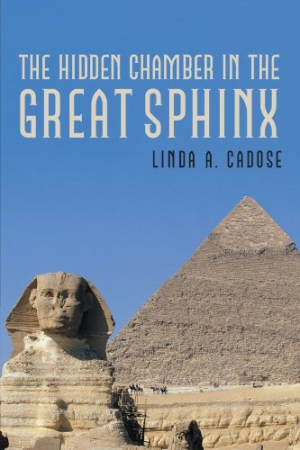The Hidden Chamber in the Great Sphinx
Archaeologist Cliff Post is intrigued when he learns that a hidden chamber has been detected within one of the paws of the Great Sphinx in Egypt. His ensuing journey to the dig site and the events that follow are explored in The Hidden Chamber in the Great Sphinx.
Cliff travels to Egypt to assist in the excavation of the newly discovered chamber and brings his neighbor and budding romantic interest, Lisa, and her young son, Matt, along for the adventure. Once the chamber is opened and several artifacts are unearthed, including unusual crystal skulls with mysterious properties, the subsequent publicity marks Cliff and his colleagues as targets for terrorists. Before long, Cliff faces threats from the terrorist group and the betrayal of someone he trusted.
Linda A. Cadose shares a great deal of information about Egypt and many scientific and technological ideas in The Hidden Chamber in the Great Sphinx. The author’s enthusiasm shines through her descriptions of Egypt, its people and history. While the facts and theories may interest inquisitive young readers, the narrative is occasionally repetitive and often reads like reportage.
The flow of the story is slightly bumpy. It suffers from intermittent transition issues and lack of full development and credibility, particularly in terms of the terrorist plot. Moreover, the central betrayal that endangers Cliff and a colleague is insufficiently explored.
The story is undermined by a multitude of errors. Character development is vague, as is the development of the relationship between Cliff and Lisa, which seems to progress quickly despite Cliff’s repeated insistence that he finds most women annoying. There are several typos, and words are sometimes misused, such as “artifice” rather than “artifact” and “lengthily” instead of “lengthy.”
Dialogue is sometimes combined without character identification. Many of the conversations are mundane and sound unnatural, as in this exchange between Cliff, his friend Mario, and an auto mechanic.
“‘I will start on the car today. I need $500 for parts.’
‘Here you are.’
‘Thank you.’
‘No, thank you for fixing it.’
‘I will call you when it is done.’
‘I will come by in the morning to pick you up at your hotel. I will also take you back to your hotel at night,’ said Mario.”
While the story is intriguing and has potential to engage readers, the author would do well to consider further research into the craft of fiction writing for a juvenile audience, as well as obtain the assistance of a skilled editor. The Hidden Chamber in the Great Sphinx and its planned sequel are certain to gain appeal with appropriate editorial support.
Reviewed by
Jeannine Chartier Hanscom
Disclosure: This article is not an endorsement, but a review. The publisher of this book provided free copies of the book and paid a small fee to have their book reviewed by a professional reviewer. Foreword Reviews and Clarion Reviews make no guarantee that the publisher will receive a positive review. Foreword Magazine, Inc. is disclosing this in accordance with the Federal Trade Commission’s 16 CFR, Part 255.

